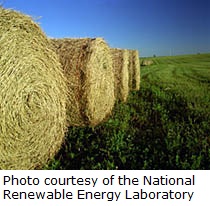 The USDA is working on matching the best places to build biofuel refineries with the areas that have the best feedstocks to produce the green fuels.
The USDA is working on matching the best places to build biofuel refineries with the areas that have the best feedstocks to produce the green fuels.
This Agricultural Research Service article says they’ve been looking at the potential in the Pacific Northwest:
[ARS] agronomist George Mueller-Warrant, plant physiologist Gary Banowetz, and hydrologist Jerry Whittaker calculated that the 6.2 million tons of straw left over from the production of Pacific Northwest cash crops could be used to produce more than 430 million gallons of biofuel. ARS is USDA’s chief intramural scientific research agency, and this research supports the USDA priority of developing new sources of bioenergy.
 The scientists, who work at the ARS Forage Seed and Cereal Research Unit in Corvallis, Ore., revised a statistical approach that had been developed by other site analysts to identify the best locations for commercial and public facilities.
The scientists, who work at the ARS Forage Seed and Cereal Research Unit in Corvallis, Ore., revised a statistical approach that had been developed by other site analysts to identify the best locations for commercial and public facilities.
Then the team used the revised program to calculate the number of biofuel conversion facilities that could be supplied by the average annual straw yield, and identified the best locations for the conversion facilities so that the costs of transporting straw could be minimized. Straw is a high-bulk, low-density commodity, which adds to the expense of moving it from field to market.
The team ran its calculations for facilities that had three different scales of annual production. Small-scale facilities could process 1,100 tons of straw, medium-sized facilities could process 11,000 tons of straw, or large-scale facilities could process 110,000 tons of straw.
Even discounting the amount of straw needed to be left on the fields, ARS researchers’ results found there would be enough feedstock for 6,200 small facilities, 660 medium facilities, or 64 large biofuels facilities.

